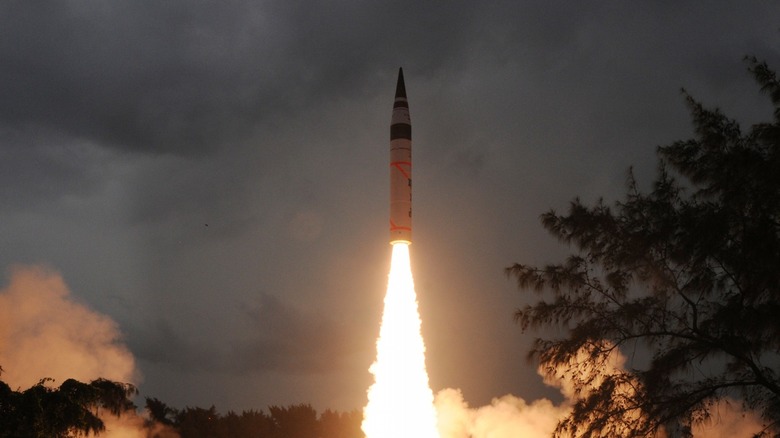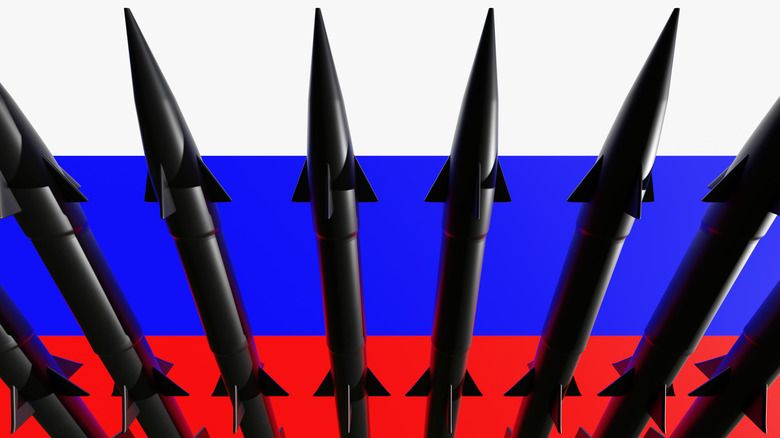What Is The World's Fastest Missile?
In the race to build better weapons, sometimes bigger isn't always better, but faster is, at least when it comes to missiles. Speed is the key in missile warfare since it adds to the element of surprise, boosts the weapon's range and accuracy, and makes it harder for the enemy to intercept it. The fastest missile in the world today can reach Mach 27, that is, 27 times faster than the speed of sound, and has a range of nearly 3,800 miles (6,000 km).
Avangard is the name of this hypersonic glide vehicle and it went into combat duty in Russia in December 2019. Avangard, which can carry a 2-megaton nuclear weapon, uses an intercontinental ballistic missile to reach the upper atmosphere before dropping down on its target at speeds between Mach 20 and Mach 27, more than 20,000 miles per hour. Avangard may mark a new era in missile technology and might give Russia, which already has the largest nuclear arsenal in the world, a distinct global advantage.
Avangard is carried on an ICBM
Avangard doesn't have its own propulsion system and instead is launched using one of Russia's intercontinental ballistic missiles, such as the RS-28 Sarmat, and since it's an ICBM, Russia, by an agreement with the U.S., is supposed to give 24-hour notice before a test launch (but stopped notifications in 2023). The ICBM takes the HGV to around 62 miles (100 Km) high into the upper atmosphere where it then separates and begins its hypersonic descent towards its target. Its wedged shape design and gravity help it reach such incredibly high speeds.
The Russians used composite materials to make it heat resistant up to 3,632 Fahrenheit, a good indication of just how fast it can travel. And for something so fast, it's remarkably small (at least in the world of missiles), just 5.4 meters (less than 18 feet) long and weighing about 2 tons or 4,000 pounds. By comparison, the U.S. Minuteman III, which can reach Mach 23, is nearly 60 feet long and weighs nearly 80,000 pounds, but has a longer range than Avangard. Still, Avangard has another advantage others don't.
Russia's missile isn't just fast, it's maneuverable
Besides being the fastest missile in the world, Avangard is also maneuverable, making it even more deadly. The Avangard missile program began in the mid-1980s before being shuttered after the 1991 fall of the Soviet Union only to be restarted by the Russian Federation a few years later as part of the secret Project 4202. In March 2018, Russian President Vladimir Putin revealed Avangard during a speech and discussed its speed and maneuverability. "It heads to target like a meteorite, like a fireball," he said (via the Associated Press).
As the HRV soars towards its target, it is believed it can skip off the atmosphere to extend its range and can be maneuvered during its descent, which makes it nearly impossible to detect or knock out with a standard missile defense system. The result: a nuclear missile strike with all that entails, from the initial mushroom cloud to thermal radiation, nuclear fallout, and the possibility of famine and large-scale displacement.
The U.S., in response, began working on its own hypersonic glide vehicle missile system resulting in Dark Eagle, which is expected to come online by the end of 2025, but isn't made to carry a nuclear warhead and can only reach Mach 5. Several other countries are also developing their own HRV systems, but as of now, Russia still has the fastest missile in the world.


